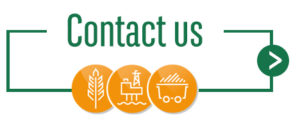
Looking out for markets with sustainable growth
As many are becoming more conscious of the importance of sustainability, companies are developing new technologies to accompany this change.
Centered on the energy transition, these new technologies are demanding of new metals, such as cobalt or lithium. In the past years, markets have gone into frenzy for these metals sometime difficult to access and with low reserves.
Cobalt: the metal on everybody’s mind
Battery metals and the EV Revolution
Cobalt is becoming widely used in batteries, which will be at the center of the Electric Vehicles (EV) Revolution. As of today, cobalt is almost irreplaceable in these batteries, due to its unique property of high temperature resistance which can, for example, prevent phones from exploding. Although electric vehicles only represent 0,2% of total light-duty vehicles today, the International Energy Agency (IAE) has set a goal of 30% market share for battery power cars, buses, trucks and vans by 2030.
The gap between supply and demand
Cobalt supply cannot follow a rising demand for two reasons: First, it is a by-product (often of copper or nickel), making production independent from demand. Increasing production would imply investing in a copper mine which may not be profitable if copper prices are too low. The blue mineral remains a relatively small market in volume compared to giants like copper, and could hardly justify a large investment. In the next years, only five new cobalt mines are due to open (adding about 50,000 tons of cobalt a year to the market). Second, most resources are in the Democratic Republic of the Congo (56,3% of world extraction), a risky business environment.
Will battery producers change their strategy?
The main question is whether battery producers are going to change the composition of their products for less cobalt, to compensate for its rising prices? The biggest users, Tesla and China, have both reaffirmed their interest in the metal. Still, cobalt can eventually be replaced by nickel and manganese or lithium batteries. Asian batteries producers, who make more than half of the market, are all looking for alternatives. Currently, the most produced batteries are nickel, manganese and cobalt (NMC) lithium-ion batteries, with a ratio of 6:2:2. Producers like South Korea’s SK Innovation have said they are working to change that ratio to 8:1:1, favoring nickel over manganese and cobalt, or to develop other types of batteries (nickel-cobalt-aluminum or even lithium-iron-phosphate batteries).
Lithium may be a safer bet to surf on the batteries rush
A majority of batteries built today are lithium-ion batteries, so that global lithium consumption increased by 14% to 37,800 tons in 2016. Unlike cobalt, it can be replaced more easily by nickel and its sourcing is much less problematic: the largest and most productive mines are in Australia, Chile and Argentina, with many mining companies investing in new projects today. Although lithium’s high prices are partly due to speculation, producers and merchants believe it will be a sustainable market to invest in the future. Overall, all the interviewees who mentioned lithium considered it was a market they would consider getting into. It certainly is a safer bet than cobalt.
This article is a synthesis of a study carried on by PSL university students and BNP Paribas in Switzerland.
PSL University and BNP Paribas in Switzerland
The partnership between the university PSL and BNP Paribas in Switzerland builds on academic research, innovative methods (i.e. DKCP), teachers’ and students’ knowledge in two Paris Dauphine Masters (“Management de la Technologie et de l’Innovation ” and “212 Affaires Internationales”). Managed by the Swiss Development and Innovation team, it creates an environment that combines two worlds to answer the business lines’ needs in transformation and development, while giving students real world experience.
